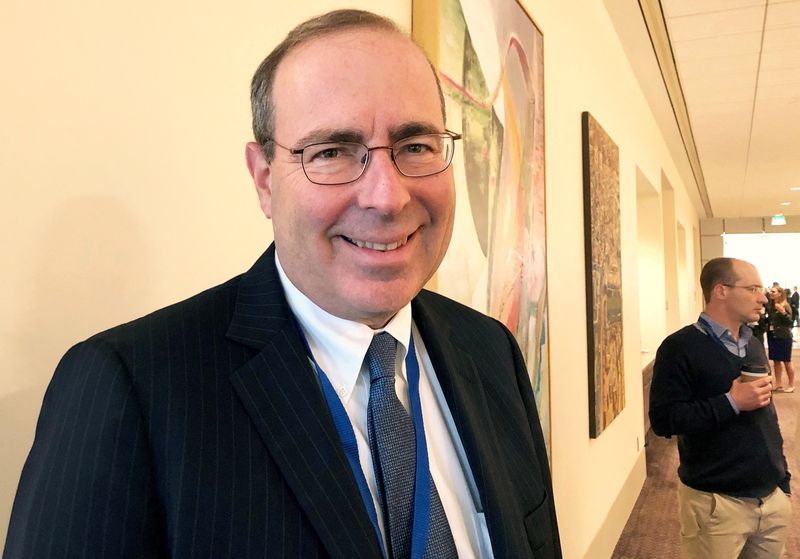By Howard Schneider
WASHINGTON (Reuters) - The U.S. Federal Reserve needs to begin raising interest rates but it is too soon to say how far or fast that process will need to go to bring inflation under control, Richmond Federal Reserve president Thomas Barkin said Thursday.
He said it remained uncertain, given the ongoing pandemic and the tangled state of global supply chains, whether U.S. inflation would dip on its own back towards the Fed's 2% target, or be driven persistently higher by rising wages, higher input costs, and businesses developing more aggressive pricing strategies.
With the Feds' target policy rate still near zero, he said, the immediate challenge is "to get ourselves in a better position to do what we might need to do should the least optimistic scenario come true, while not constraining the economy" in the meantime, Barkin said in a Reuters interview.
"It is a straightforward call to say we ought to get rates back into better position," Barkin said, but with so much unknown, "it does not feel to me like there is enough information to say holy cow we have to restrain the economy right now."
His comments were a more tempered view of a situation that has prompted some market analysts to conclude the Fed has lost control of inflation and will be forced to raise interest rates faster and higher than anticipated -- potentially putting the economic recovery at risk. Prices currently are rising at levels not seen since the early 1980s.
The Fed at its March meeting is expected to raise the target interest rate by a quarter of a percentage point from the current near zero level, and provide some guidance on how it intends to proceed from there.
Barkin would not say how many rate increases he anticipates will be appropriate this year. Investors have priced 5 quarter point hikes into contracts linked to the federal funds rate, and his colleagues talk in terms of 3 to 5.
Barkin said that in general he feels the federal funds rate should be increased to where it was just before the pandemic -- at the end of 2019 it was set in a range between 1.5 and 1.75% -- before reassessing how much more might be needed.
He did not specify a timeline for that, and said the behavior of inflation could swing policy in either direction.
"Pre-pandemic levels are the place to reassess. Where we were pre-pandemic was under every member of the (Federal Open Market Committee's) assessment of where neutral was," meaning the Fed at that point would not be actively restricting the economy, Barkin said.
"Then we can look around and say do you want to then start to move into the range ... where we are starting to restrain?"
At this point, Barkin said, it remains uncertain what will happen in the economy once the effects of the pandemic lift more fully. As it is, millions of workers might be sidelined sick at home in a given week, or global hubs like China have parts of their manufacturing base shut down at any given time.

That makes it difficult to judge how prices and employment will behave once pandemic risks recede, Barkin said, and hard to anticipate how monetary policy will need to respond.
“Covid is still here. Still influencing supply chains. Still influencing demand," Barkin said. At this point "I don't know how to declare the regime we are in."